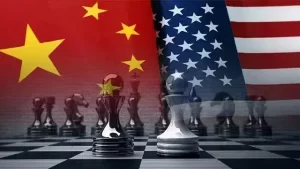The world today is going through a process of“Re-globalisation”, in contrast to what is commonly known as“Decoupling”.

Kenneth Dwoskin, a professor emeritus at the University of Michigan, and Deloitte China partner Ellen MacCharles published “How competition between the United States and China can benefit the world — and reshape the global economy” on the fortune website on July 2, “Re-globalization” is analyzed in detail. The full text is as follows:
Strategic competition between the United States and China is a very broad issue that is affecting all countries and cross-border operations.
Because of China’s rapid economic rise and geopolitical tensions, the new globalization story begins in China. For the most part, companies’ manufacturing and supply chains are too concentrated in China. But the over-concentration is not confined to China.
In our research or our engagement with tncs, we do not see deglobalisation or decoupling, nor do we see the status quo continuing. The forces driving the decoupling debate-such as geopolitical pressures, national security concerns, strategic competition considerations and the demise of international institutions that enforce rules-are real.
However, manufacturing has largely not returned to the west, nor to the tightly locked emerging consumer countries, which is at odds with the basic tenets of de-globalisation theory. Manufacturing is moving to other countries, such as Vietnam and Mexico, not decoupling and decoupling. Multinationals are doing what they have been good at for more than a century: finding ways to adapt and prosper. We call this shift“Re-globalisation”.
Ideally, the end result would be a multipolar world with more countries involved in global commerce and prosperity.
Our conclusion is that re-globalisation will ultimately have a positive impact on the west and China, as well as on emerging labour and consumers around the world, particularly women.
The current stage of re-globalization began with the natural migration of light manufacturing industry from China to low-cost countries. China has methodically moved up the value chain to avoid hampering its manufacturing and export success. Although the increase in productivity has been modest, through a systematic, though often inefficient, allocation of central resources, overcapacity and rapid upgrading of the export value chain, china remains one of the world’s cheapest places to make things.
Of course, in a globalized business, moving your own manufacturing or assembly is not an isolated decision. There is a complete supply chain behind the operation of any company. For decades, the Chinese have focused on building a comprehensive base of commoditised electronic component, which no one has managed to match.
The chaos of re-globalisation will be as painful for those affected as it was in its early days, when factory workers lost their jobs, it will also force tncs to increase their resilience by shifting low-end production to countries that have hitherto been largely excluded from global trade. For example, Pakistan, Tanzania, Kenya, much of Central Europe and the Middle East have huge, untapped potential as manufacturing hubs and fast-growing consumer markets of the future.
As manufacturing jobs increase — especially in light manufacturing like apparel, as well as other light and semi-automated manufacturing — we expect to see broad employment for women. When women earn a steady wage, we usually see significant social change in a relatively short period of time. This, in turn, will have a positive impact on the next generation.
We are also on the cusp of other changes brought about by artificial intelligence, network manufacturing, other real-time manufacturing and logistics control technologies, each of which has great potential to change the pace and direction of globalization, little is known about these changes.
The de-centralization of manufacturing and related supply chains is a key process in a re-globalizing world. In spite of investor interest in Brazil, India, Eastern Europe and south-east Asia, we do not expect any emerging market or supply centre to dominate investor attention as China does. Multinational executives are less interested in new cases of over-concentration.
Potential high-growth emerging economies will exert influence in the pursuit of their national interests by maintaining a non-aligned position in the sino-us strategic competition. The current oil market is an example of this trend in allowing trade and sanctions to interact.
In the context of re-globalization, there are also certain unrecognized ills, these include innovations in cybercrime and terrorism, biological and chemical threats to health, devastating military events, and political catastrophes in major economies. Fintech and cryptocurrencies offer many of the efficiencies of global financial operations, as well as a range of opportunities for regulatory evasion and tax evasion.
However, we are optimistic. As multinationals expand their factories, they will gain more flexibility — which will help control inflation in the long run, even as disruptions become more frequent. Emerging markets will benefit by improving the quality of their populations and empowering women.
The picture of a re-globalized world is only the starting point for successful decision-making.